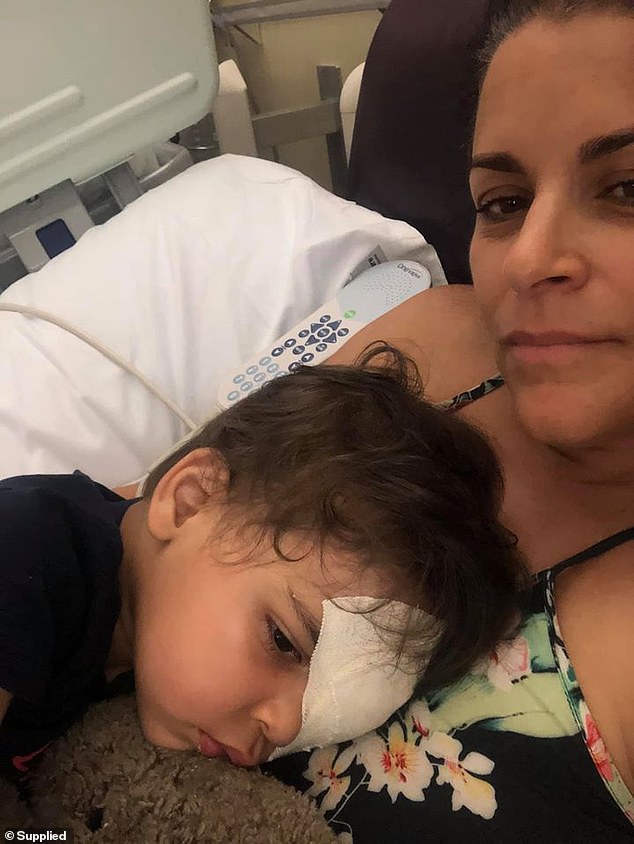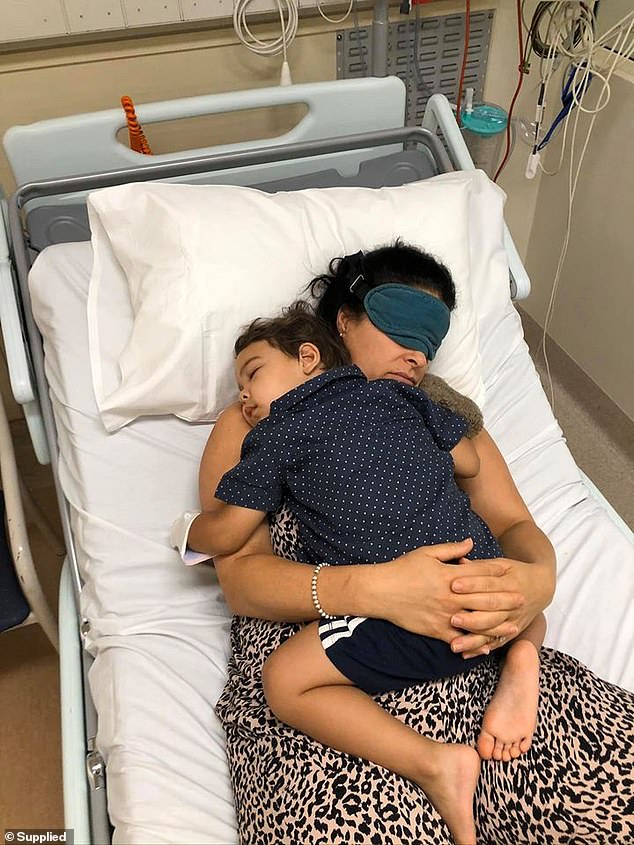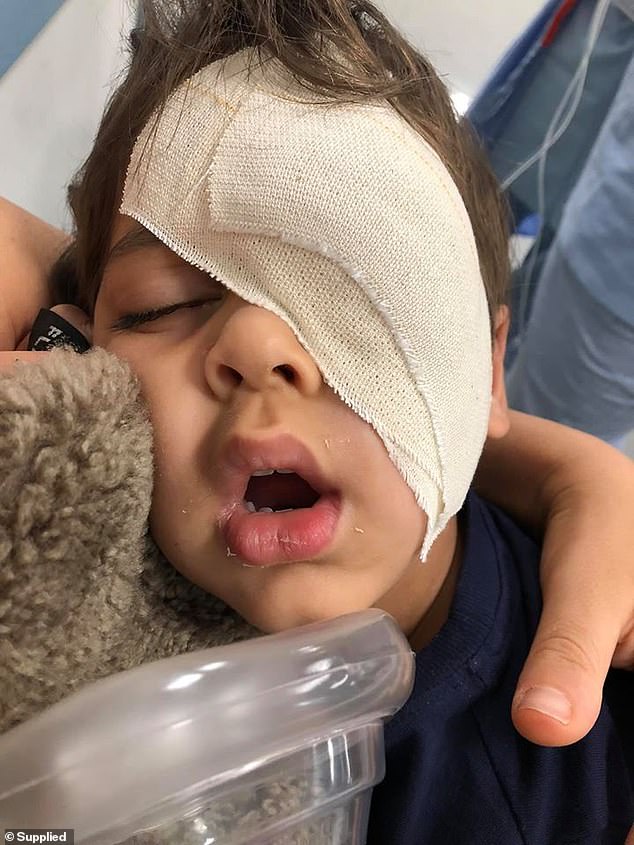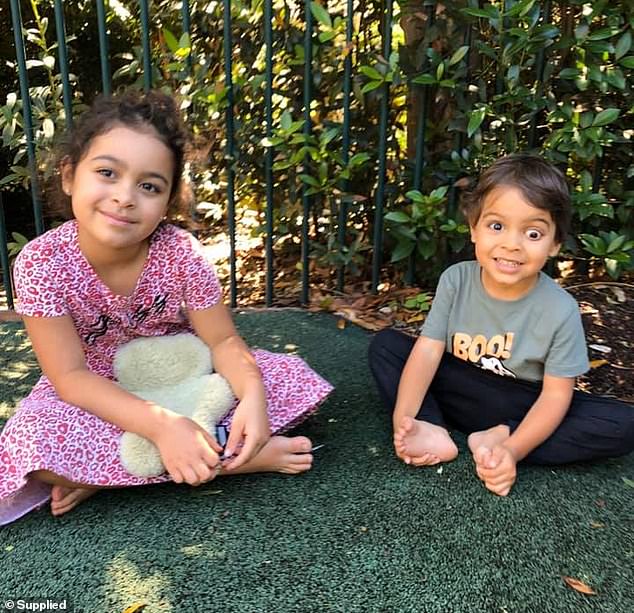The mother of a two-year-old boy who lost one eye to a rare kind of cancer is advising parents to keep a watch on their kids by snapping pictures with a flash, which oftentimes is the first and only indicator that a tumor is developing at the back of the eye.
Rocky, the son of Kara Sefo, was a “dream baby” who slept soundly, played enthusiastically, and nursed easily.
As a result, the events manager from Newcastle, two hours north of Sydney, wasn’t very concerned when she discovered her four-month-old was periodically developing a lazy eye in late February 2018. The physician she took him to wasn’t either.
However, Ms. Sefo, 43, turned one evening as she washed dishes and noticed a reflected patch that resembled a marble in her son’s left eye. Her gut warned her that something more terrible was wrong.
On June 21, 2018, a Wednesday, Ms. Sefo learned the heartbreaking news that Rocky had retinoblastoma, an early childhood cancer, growing behind both of his eyes. He was eight months old at the time.

Rocky’s left eye was removed in March of 2020, at the age of just two, after months of chemotherapy, laser treatment, and cryotherapy failed to clear his tiny body of cancer. The battle began with the diagnosis.
One night, I was washing the dishes while he was doing tummy time, and I recall noticing a patch that looked like a marble or cat’s eye. Looking back, I realize it was the retinoblastoma being touched by light, Ms. Sefo told Daily Mail Australia.
When Rocky was six and a half months old, a chiropractor performing a routine assessment on him spotted his lazy eye and recommended Ms Sefo take him to their GP for a checkup.
Although Rocky was sent to an ophthalmologist to rule out any underlying problems, the specialist detected nothing abnormal.
He had 90 percent vision in his right eye, according to an ultrasound, but only 10 percent in his left eye, which had a tumor that was out of control in the retina, the part of the eye that senses light at the back.
Rocky’s six-month chemotherapy treatment plan was started right away by medical professionals in order to get rid of the illness before it progressed to his brain and central nervous system.
They actually told us that if that occurred, we would lose him, Ms. Sefo recalled.
“I just started crying because I guess deep down I knew something was wrong all along.” When I entered the oncology unit and saw all these children hooked up to tubes, I recall feeling as though I was dreaming.

Retinoblastoma is an uncommon type of cancer that mostly affects children under the age of three and develops at the back of the eye.
While the precise causes are still unknown, doctors do know that a defective RB1 gene, which can be inherited from one or both parents or develop independently in the child after birth, is connected to cancer.
Rocky is one of about 750 Australian kids under 14 who are given a cancer diagnosis each year.
Retinoblastoma symptoms wax and wane, emerging and then abruptly disappearing, and are frequently mistaken for those of common pediatric infections, making diagnosis challenging and frequently resulting in lengthy delays in finding the disease.
Given that the disease has not yet advanced to the optic nerve, brain, or spinal cord, children with retinoblastoma have great long-term survival chances. Therefore, early discovery can mean the difference between life and death.

The most visible warning indicator is a pupil that is white or yellowish instead of red when a light is thrown into it, which is why Ms. Sefo advises parents to often take photos of their children with the flash on.
Other signs of the condition include eyes that appear to droop or stare in different directions, a red, aching, or swollen eyeball, cloudiness in the iris, the colored portion of the eye.
Ms. Sefo experienced excruciating stomach discomfort on the day of Rocky’s diagnosis, which she attributed to the stress and anxiety of learning such devastating news.
She was brought to the emergency hospital after feeling so sick that she could hardly move. There, physicians quickly removed her appendix after determining that it was on the verge of burst.
She said, “I couldn’t even pick him up, and Rocky was starting chemo, so it made everything even more difficult.”
Rocky began a less intrusive course of treatment with monthly laser and cryotherapy sessions to eradicate the recalcitrant tumors that persisted behind his left eye after undergoing six months of chemotherapy.
But by September 2019, the cancer had spread too far, and Rocky was forced to go through a second round of chemotherapy for three months, this time administered right into his eye.
Retinoblastoma, a rare type of childhood cancer, develops when aberrant cells in the retina—the part at the back of the eye that senses light—grow out of control.
One or both eyes may be impacted, and it typically affects youngsters under the age of three.

While the precise causes are still unknown, doctors do know that a defective RB1 gene, which can be inherited from one or both parents or develop independently in the child after birth, is connected to cancer.
Every year, 750 Australian kids between the ages of 0 and 14 are given a cancer diagnosis.
Australia, which ranks below Germany, the US, South Korea, and Canada among the G20 nations in terms of the prevalence of children cancer, has one of the best survival rates in the world, with an average five-year survival rate of 84 percent.
Leukemia is the second leading cause of cancer death in children in Australia, accounting for 22% of cases, followed by neuroblastomas, including retinoblastoma, at 13%. Tumors of the central nervous system, especially brain tumors, account for 39% of these cases.
Given that the disease has not yet advanced to the optic nerve, brain, or spinal cord, long-term survival rates are high; therefore, early discovery can mean the difference between life and death.
Rocky unexpectedly stopped responding to treatment in February 2020, despite the fact that it had initially seemed to be helping, and physicians were forced to schedule an operation to remove the eye in late March.
We all sobbed, but Ms. Sefo remarked, “we tried to think of it as the end of something and the beginning of a new chapter for Rocky’s life.”
“This experience has made me realize how strong a mother’s intuition is; you simply feel that something isn’t right on some level,” she said.
For Ms. Sefo and her family, the procedure was “very traumatic,” but Rocky, whom she refers to as her “little champion,” carried on as usual.

The patch he had to wear after having his eye removed was what worried him the most, according to her, and when it was removed, he resumed acting normally.
Ms. Sefo’s journey has been influenced by Rocky’s battle with cancer.
She shot a photo of Rocky with the flash on one hour prior to having his eye removed in order to educate other Australian families about retinoblastoma. She is now a passionate supporter of children with cancer.
The only other way to identify this, aside from the camera flash, is to have every child’s eyes dilated at six weeks old, according to a California statute, she added.
Ms. Sefo hopes to run a campaign to have legislation like that passed in Australia.
She said, “The test they perform in the GP clinic is simply not good enough; something has to change.”
Take a flash photo once a month in the interim. It’s the best test we have at the moment.




